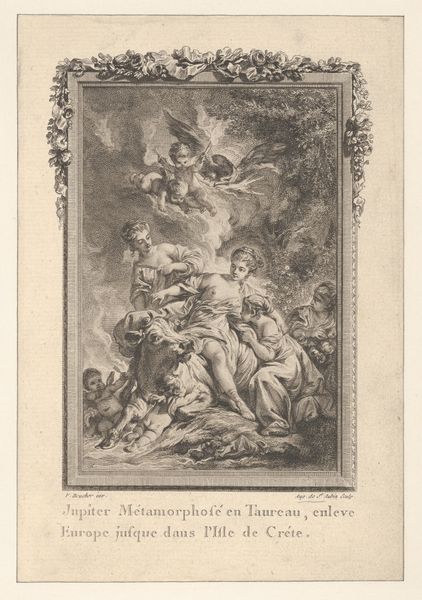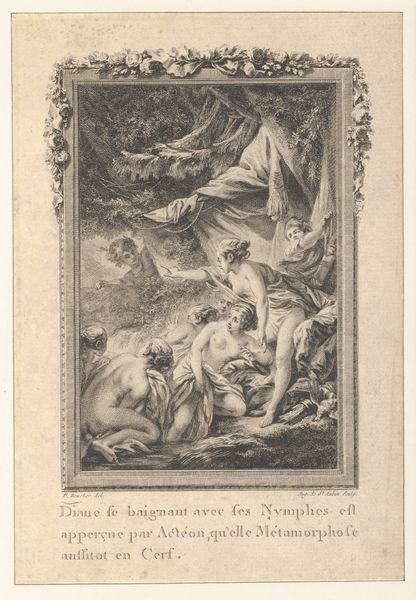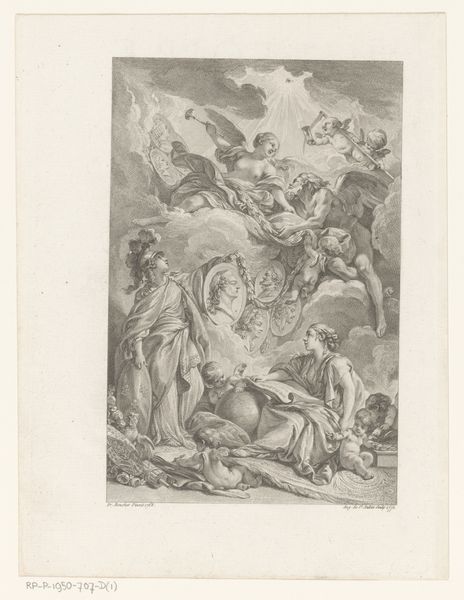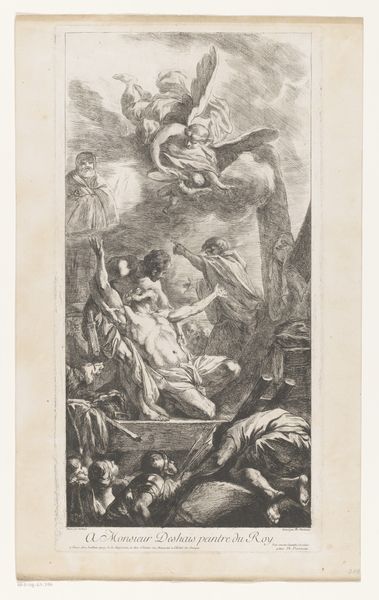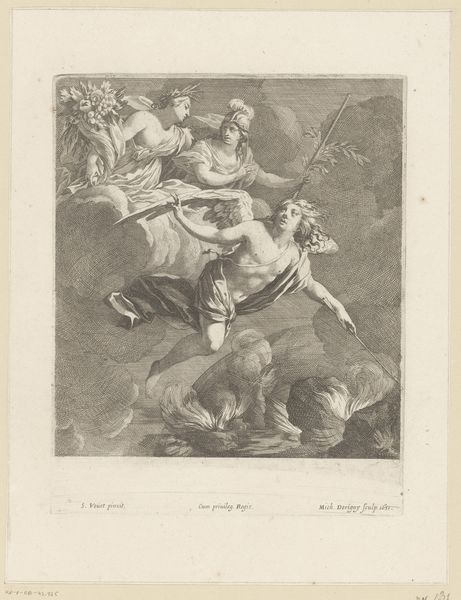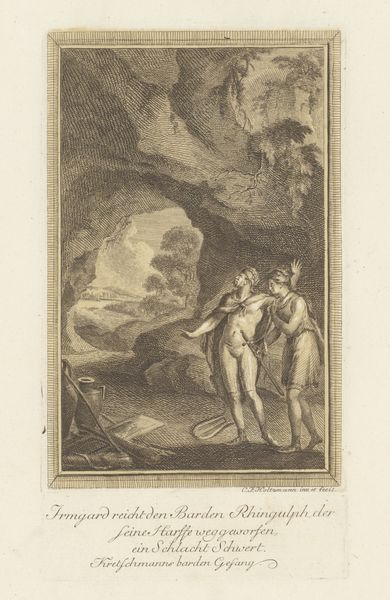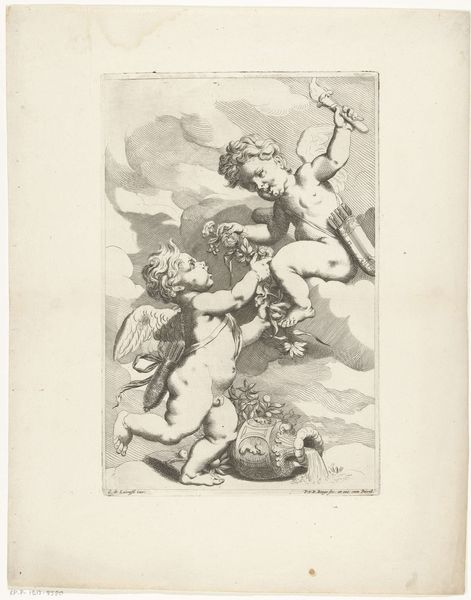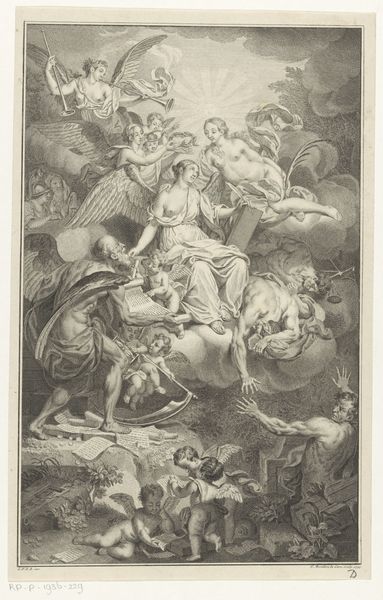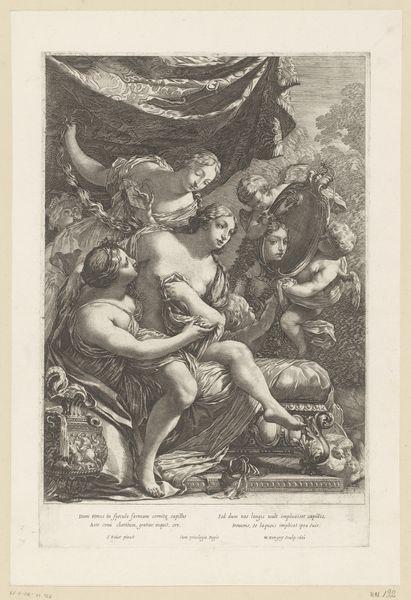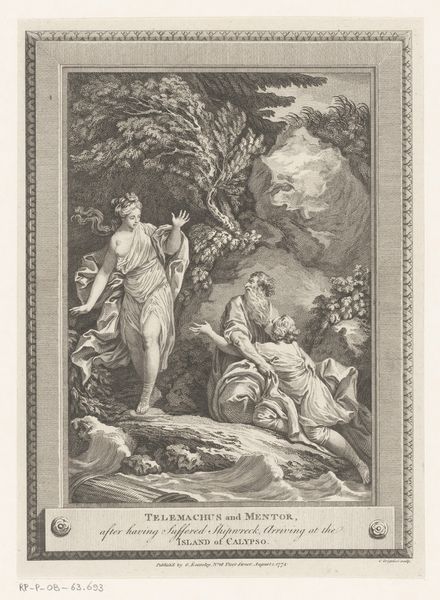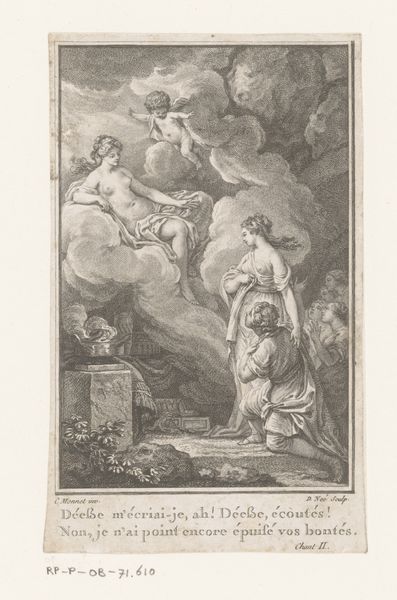
Vignette (Tome I.er, page 164, lib. II, fab. 15), depicting Cephalus and Aurora, from "Les Métamorphoses d'Ovide en Latin et en François de la traduction de M. l'Abbé Banier de l'Académie Royale des Inscriptions et Belles-Lettres. Avec des explications historiques. A Paris Chez Despilly rue saint Jacques à la croix d'or. MDCCLXVII. Avec Approbation et Privilège du Roi" 1760 - 1770
0:00
0:00
drawing, print, engraving
#
drawing
#
allegory
# print
#
landscape
#
figuration
#
history-painting
#
nude
#
engraving
#
rococo
Dimensions: Sheet: 7 5/8 × 5 3/16 in. (19.4 × 13.2 cm)
Copyright: Public Domain
Curator: This engraving, created between 1760 and 1770 by Augustin de Saint-Aubin, depicts Cephalus and Aurora from Ovid's Metamorphoses. It's currently housed at the Metropolitan Museum of Art. Editor: My immediate impression is of lightness and airiness. The figures seem to float within the composition, rendered with incredibly fine lines that capture a sense of ethereal beauty. Curator: Indeed, Saint-Aubin masterfully employs the engraving technique to convey the Rococo aesthetic. But what does the abduction narrative communicate to us today in the twenty-first century? The power dynamics depicted—a god abducting a mortal—prompt questions about consent and authority, raising important intersectional dialogues. Editor: From a purely formal viewpoint, the composition guides our eyes meticulously. Notice the symmetry of the clouds balanced with the rocky landscape. Aurora's chariot, pulled by horses, creates a dynamic arc countered by Cephalus's reclining form. Curator: Absolutely, and understanding the context is crucial here. Cephalus’ abduction can be seen as an allegory for the abuse of power, perhaps mirroring the socio-political inequalities of the time. These themes still resonate today, fueling vital conversations about autonomy and justice. Editor: The linear precision of the engraving lends itself well to allegorical interpretations. Each form, meticulously rendered, gains symbolic weight within the narrative framework. Even the dogs at Cephalus' feet contribute to the overall composition, grounding the celestial scene with a touch of earthly realism. Curator: For me, this work underscores how visual representations can either reinforce or challenge oppressive norms. Engaging with art like this offers a valuable opportunity for critical reflection on historical narratives and their continued influence on contemporary power structures. Editor: Ultimately, this print's success lies in its meticulous execution and sophisticated composition, rendering it a powerful visual interpretation. Curator: Yes. I think this work serves as an important starting point for interrogating how narratives of power continue to be shaped.
Comments
No comments
Be the first to comment and join the conversation on the ultimate creative platform.
